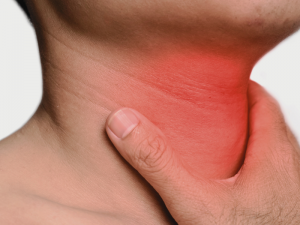Joint and muscle pain is probably the number one symptom that prompts people to seek the help of health professionals such as osteopaths. Musculoskeletal pain affects the bones, muscles, ligaments, tendons and nerves, it is commonly but not always caused by physical injury, which can be widespread or localised in just one body part.
Acute episodes of pain after a sprain, strain or fall, are the usual reasons people seek advice and treatment, but others visit the clinic seeking help for ongoing discomfort for persistent or chronic conditions. Approximately 50% of those with chronic pain have musculoskeletal problems, with proportion developing chronic pain syndromes. The healthcare, economic and personal costs of managing pain are huge.
In the UK there are a reported 2500 deaths a year which can be related to the use of non-steroidal anti-inflammatory drugs (NSAIDs). Worryingly, 70-80% of the population are reported to mismanage medication for back or joint pain. It is crucial that we improve our knowledge of what drugs are safe to take since self-medication is epidemic and over the counter analgesics (painkillers) and anti-inflammatories (NSAID) are so easy to buy, especially as it can be a challenge to see a GP.
Speak to a pharmacist
If you decide to self-medicate with an analgesic or anti-inflammatory for an injury and can’t get to your GP, it is advisable to talk with a local pharmacist; who are highly trained, knowledge practitioners.
The current advice recommends taking a regular dose over for 4 -5 days rather than taking an occasional pill now and then, as most medicines build-up gradually and will be more effective if taken regularly.
Musculoskeletal pain management
Most symptoms normally improve within a few days or weeks, and rarely routinely require specialist pain management. Initial treatment of acute pain is habitually a combination physical therapy such as osteopathy, staying active, and using simple analgesics with or without anti-inflammatory medications.
Pharmacotherapy in musculoskeletal pain
Pharmacotherapy is treatment using pharmaceutical drugs. The World Health Organisation (WHO) developed a three-step “protocol” for the management of pain associated with malignancy; however, its general principles can be employed to manage musculoskeletal pain too.
Stage 1. Simple analgesics. These include paracetamol and NSAIDs.
The problem with NSAIDs is gastric, renal and anti-platelet side-effects, with gastroprotective medication may be needed for some higher-risk patients. There is a move away from long-term NSAIDs due to concerns over their side effects and toxicity.
Stage 2. Stronger medication, these include weak opioids.
Drugs including codeine and dihydrocodeine and medication such as Tramadol are as weak opioids. These medicines are effective in managing moderate pain, especially when combined with simple analgesics, e.g., paracetamol. However, they can lead to gastrointestinal problems, for this reason, lower doses combined with paracetamol may offer enhanced pain relief for some people.
Stage 3. Strong opioids, such as morphine and its derivatives.
Doctors often avoid prescribing strong opioids due to concerns around dependency and side-effects. Nevertheless, it is important to prescribe according to the patient’s needs to achieve the primary goal, to manage their pain effectively.
Other medications
For pain that is nerve related (neuropathic pain) such as sciatica, drugs such as Amitriptyline which is an older antidepressant regularly prescribed to treat pain (especially nerve pain) and its associated sleep problems. Other medicines in this category include Gabapentin and Pregabalin. Finally, muscle relaxants may be helpful in the acute phase of a joint or muscle injury.
Caution
NASIDs can cause side effects such as stomach irritation so you should only use them as short courses, guided by your GP or specialist.
NSAIDs are generally not recommended for people with kidney disease, heart failure, cirrhosis, or for those who take diuretics.
NSAIDs may cause worsening of asthma and related symptoms in some people. Please consult your GP if any of the above apply to you before self-medicating.
Final thoughts
While painkillers are often the first option for the treatment of musculoskeletal pain, effective management usually means another intervention is needed in addition to just taking pills. Of course, with an acute injury, for example; a muscle sprain, anti-inflammatory painkillers can be an effective first line treatment. Research shows that an entirely different approach is often beneficial in cases of chronic pain ( lasting longer than 12 weeks), one that tackles physical, psychological and social factors.
Ideally, a multidisciplinary approach which might consist of health professionals such as manual or physical therapy experts; osteopaths, physiotherapists, alongside doctors who specialise in pain management. Consulting a psychologist may be helpful for people with persistent chronic pain syndromes. Careful and thorough assessment is crucial to avoid chronicity, once diagnosed prompt referral to other specialists for appropriate care or further investigation is best practice. However, sadly there can be long waiting times due to the constraints of the NHS, which is where osteopaths can help.
Please note:
This is for guidance only, it should not be regarded as a substitute for medical advice, examination or treatment given in person by an appropriately trained health professional.
References
Phillips, C. (2009). The Cost and Burden of Chronic Pain. British Journal of Pain, 3(1), pp.2-5.
Andersson HI, Ejlertsson G, Leden I et al. Musculoskeletal chronic pain in general practice. Studies of health care utilization in comparison with pain prevalence. Scand J Prim Health Care 1999; 17: 87–92.
Gureje O, Von Korpff M, Simon GE et al. Persistent pain and well-being: a World Health Organisation Study in Primary Care. JAMA 1998; 280: 147–151.
WHO: World Health Organisation. Cancer pain relief. WHO, Geneva, 1988. http://www.who.int/cancer/palliative/painladder/en/http://www.who.int/cancer/palliative/painladder/en/







